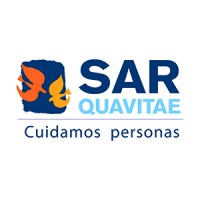Company Details
mayo-clinic
46,331
1,501,571
62
mayoclinic.org
159
MAY_1105121
Completed

Mayo Clinic Company CyberSecurity Posture
mayoclinic.orgMayo Clinic has expanded and changed in many ways, but our values remain true to the vision of our founders. Our primary value – The needs of the patient come first – guides our plans and decisions as we create the future of health care. Join us and you'll find a culture of teamwork, professionalism and mutual respect, and most importantly, a life-changing career. Mayo Clinic was founded in Rochester, Minnesota by brothers Dr. William James Mayo and Dr. Charles Horace Mayo. More than 100 years later, their vision continues to evolve around a single guiding value: "The needs of the patient come first." Today we are the largest integrated, not for-profit medical group practice in the world. We are recognized for high-quality patient care more than any other academic medical center in the nation. These endorsements are very gratifying, but also humbling. They remind us of the tradition that has been entrusted to each one of us, and the legacy of excellence that we uphold every day.
Company Details
mayo-clinic
46,331
1,501,571
62
mayoclinic.org
159
MAY_1105121
Completed
Between 800 and 849

 Mayo Clinic Global Score (TPRM)
Mayo Clinic Global Score (TPRM)XXXX



No incidents recorded for Mayo Clinic in 2025.
No incidents recorded for Mayo Clinic in 2025.
No incidents recorded for Mayo Clinic in 2025.
Mayo Clinic cyber incidents detection timeline including parent company and subsidiaries

Mayo Clinic has expanded and changed in many ways, but our values remain true to the vision of our founders. Our primary value – The needs of the patient come first – guides our plans and decisions as we create the future of health care. Join us and you'll find a culture of teamwork, professionalism and mutual respect, and most importantly, a life-changing career. Mayo Clinic was founded in Rochester, Minnesota by brothers Dr. William James Mayo and Dr. Charles Horace Mayo. More than 100 years later, their vision continues to evolve around a single guiding value: "The needs of the patient come first." Today we are the largest integrated, not for-profit medical group practice in the world. We are recognized for high-quality patient care more than any other academic medical center in the nation. These endorsements are very gratifying, but also humbling. They remind us of the tradition that has been entrusted to each one of us, and the legacy of excellence that we uphold every day.


Founded in 1872, St. Luke’s University Health Network (SLUHN) is a fully integrated, regional, non-profit network of more than 23,000 employees providing services at 16 campuses and 350+ outpatient sites. With annual net revenue of $4 billion, the Network’s service area includes 11 counties in two s

Boston Children's Hospital is a 404-bed comprehensive center for pediatric health care. As one of the largest pediatric medical centers in the United States, Boston Children's offers a complete range of health care services for children from birth through 21 years of age. (Our services can begin int
Since its start in 1855 as the nation's first hospital devoted exclusively to caring for children, The Children's Hospital of Philadelphia has been the birthplace for many dramatic firsts in pediatric medicine. The Hospital has fostered medical discoveries and innovations that have improved pediatri

Alberta Health Services (AHS) is proud to be part of Canada’s first and largest provincewide, integrated health system, responsible for delivering health services to more than 4.5 million people living in Alberta, as well as occasionally to some residents of other provinces and territories Our skil

Join a team connected by collaboration, support and most importantly, the goal of providing quality patient care. We value career growth with employer-supported training, encourage a culture where everyone’s voice is heard and strive to create a supportive team environment. To learn more, visit vch.
UPMC is a world-renowned, nonprofit health care provider and insurer committed to delivering exceptional, people-centered care and community services. Headquartered in Pittsburgh and affiliated with the University of Pittsburgh Schools of the Health Sciences, UPMC is shaping the future of health thr
Sharp HealthCare is a not-for-profit health care system based in San Diego, California, with four acute care hospitals, three specialty hospitals, three medical groups and a health plan. We provide medical services in virtually all fields of medicine, including primary care, heart care, cancer, orth

SARquavitae, personas que cuidan a las personas SARquavitae es la mayor plataforma de España de servicios sanitarios y sociales de atención a las personas. La plantilla, formada por 12.200 profesionales, ofrece más de 10.900 plazas repartidas por todo el territorio español y atiende a unas 200.0

At Piedmont, we deliver healthcare marked by compassion and sustainable excellence in a progressive environment, guided by physicians, delivered by exceptional professionals and inspired by the communities we serve. Piedmont is a not-for-profit, community health system comprised of 25 hospitals and
.png)
As AI-powered tools continue to flood the market, healthcare cybersecurity leaders must conduct thorough risk assessments to ensure that...
Heather M. Costa, director of technology resilience at the Mayo Clinic, will address the Penn State Chapter of the Order of the Sword...
Ransomware attacks against healthcare providers are not simply a technology issue, they represent a public health crisis.
Open-source software company Red Hat has confirmed a security breach on one of its GitLab instances after a threat actor claimed to have...
Gunjan Kedia, Gianrico Farrugia and Beth Wozniak appear at the Minnesota Star Tribune's inaugural ideas festival.
Learn about how poorly implemented security technology can contribute to clinician burnout and the steps that can help address those...
The two recently convened a panel of multidisciplinary stakeholders to discuss this issue, including radiologists, technologists,...
Leaders from top hospital systems, insurance companies, device manufacturers, digital health startups and consultancies will convene in...

Explore insights on cybersecurity incidents, risk posture, and Rankiteo's assessments.
The official website of Mayo Clinic is http://www.mayoclinic.org.
According to Rankiteo, Mayo Clinic’s AI-generated cybersecurity score is 818, reflecting their Good security posture.
According to Rankiteo, Mayo Clinic currently holds 0 security badges, indicating that no recognized compliance certifications are currently verified for the organization.
According to Rankiteo, Mayo Clinic is not certified under SOC 2 Type 1.
According to Rankiteo, Mayo Clinic does not hold a SOC 2 Type 2 certification.
According to Rankiteo, Mayo Clinic is not listed as GDPR compliant.
According to Rankiteo, Mayo Clinic does not currently maintain PCI DSS compliance.
According to Rankiteo, Mayo Clinic is not compliant with HIPAA regulations.
According to Rankiteo,Mayo Clinic is not certified under ISO 27001, indicating the absence of a formally recognized information security management framework.
Mayo Clinic operates primarily in the Hospitals and Health Care industry.
Mayo Clinic employs approximately 46,331 people worldwide.
Mayo Clinic presently has no subsidiaries across any sectors.
Mayo Clinic’s official LinkedIn profile has approximately 1,501,571 followers.
Mayo Clinic is classified under the NAICS code 62, which corresponds to Health Care and Social Assistance.
Yes, Mayo Clinic has an official profile on Crunchbase, which can be accessed here: https://www.crunchbase.com/organization/mayoclinic.
Yes, Mayo Clinic maintains an official LinkedIn profile, which is actively utilized for branding and talent engagement, which can be accessed here: https://www.linkedin.com/company/mayo-clinic.
As of November 27, 2025, Rankiteo reports that Mayo Clinic has not experienced any cybersecurity incidents.
Mayo Clinic has an estimated 29,991 peer or competitor companies worldwide.
Total Incidents: According to Rankiteo, Mayo Clinic has faced 0 incidents in the past.
Incident Types: The types of cybersecurity incidents that have occurred include .
.png)
Angular is a development platform for building mobile and desktop web applications using TypeScript/JavaScript and other languages. Prior to versions 19.2.16, 20.3.14, and 21.0.1, there is a XSRF token leakage via protocol-relative URLs in angular HTTP clients. The vulnerability is a Credential Leak by App Logic that leads to the unauthorized disclosure of the Cross-Site Request Forgery (XSRF) token to an attacker-controlled domain. Angular's HttpClient has a built-in XSRF protection mechanism that works by checking if a request URL starts with a protocol (http:// or https://) to determine if it is cross-origin. If the URL starts with protocol-relative URL (//), it is incorrectly treated as a same-origin request, and the XSRF token is automatically added to the X-XSRF-TOKEN header. This issue has been patched in versions 19.2.16, 20.3.14, and 21.0.1. A workaround for this issue involves avoiding using protocol-relative URLs (URLs starting with //) in HttpClient requests. All backend communication URLs should be hardcoded as relative paths (starting with a single /) or fully qualified, trusted absolute URLs.
Forge (also called `node-forge`) is a native implementation of Transport Layer Security in JavaScript. An Uncontrolled Recursion vulnerability in node-forge versions 1.3.1 and below enables remote, unauthenticated attackers to craft deep ASN.1 structures that trigger unbounded recursive parsing. This leads to a Denial-of-Service (DoS) via stack exhaustion when parsing untrusted DER inputs. This issue has been patched in version 1.3.2.
Forge (also called `node-forge`) is a native implementation of Transport Layer Security in JavaScript. An Integer Overflow vulnerability in node-forge versions 1.3.1 and below enables remote, unauthenticated attackers to craft ASN.1 structures containing OIDs with oversized arcs. These arcs may be decoded as smaller, trusted OIDs due to 32-bit bitwise truncation, enabling the bypass of downstream OID-based security decisions. This issue has been patched in version 1.3.2.
Suricata is a network IDS, IPS and NSM engine developed by the OISF (Open Information Security Foundation) and the Suricata community. Prior to versions 7.0.13 and 8.0.2, working with large buffers in Lua scripts can lead to a stack overflow. Users of Lua rules and output scripts may be affected when working with large buffers. This includes a rule passing a large buffer to a Lua script. This issue has been patched in versions 7.0.13 and 8.0.2. A workaround for this issue involves disabling Lua rules and output scripts, or making sure limits, such as stream.depth.reassembly and HTTP response body limits (response-body-limit), are set to less than half the stack size.
Suricata is a network IDS, IPS and NSM engine developed by the OISF (Open Information Security Foundation) and the Suricata community. In versions from 8.0.0 to before 8.0.2, a NULL dereference can occur when the entropy keyword is used in conjunction with base64_data. This issue has been patched in version 8.0.2. A workaround involves disabling rules that use entropy in conjunction with base64_data.

Get company history
















Every week, Rankiteo analyzes billions of signals to give organizations a sharper, faster view of emerging risks. With deeper, more actionable intelligence at their fingertips, security teams can outpace threat actors, respond instantly to Zero-Day attacks, and dramatically shrink their risk exposure window.
Identify exposed access points, detect misconfigured SSL certificates, and uncover vulnerabilities across the network infrastructure.
Gain visibility into the software components used within an organization to detect vulnerabilities, manage risk, and ensure supply chain security.
Monitor and manage all IT assets and their configurations to ensure accurate, real-time visibility across the company's technology environment.
Leverage real-time insights on active threats, malware campaigns, and emerging vulnerabilities to proactively defend against evolving cyberattacks.




